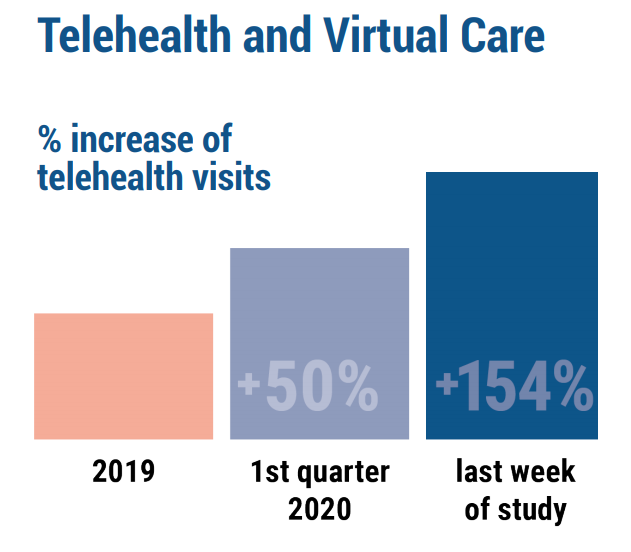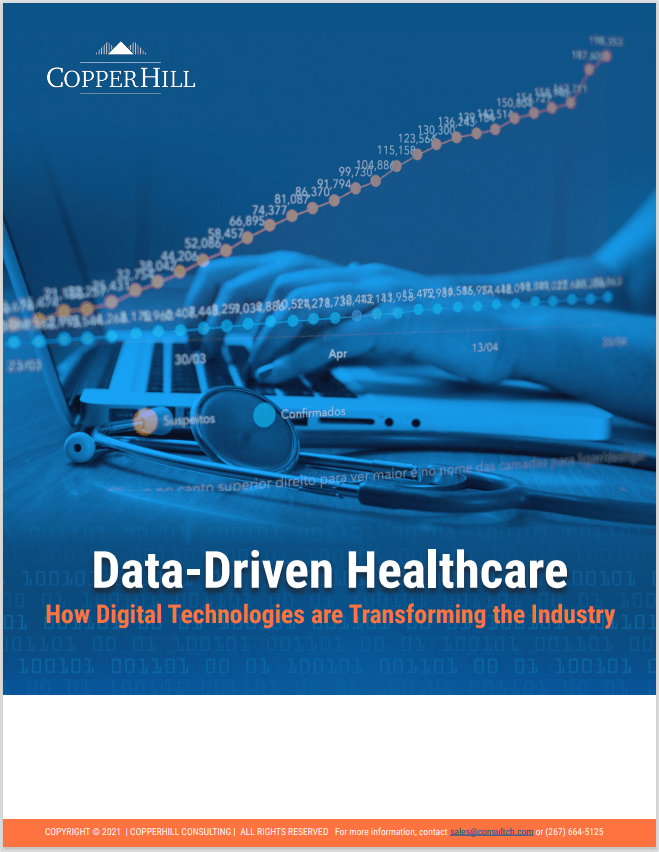Data-Driven Healthcare: Telehealth can improve patient care and reduce costs
Data-Driven Healthcare: Telehealth can improve patient care and reduce costs
 As the pandemic has raged, hospitals and healthcare providers were forced to limit their operations and restrict in-patient visits to urgent or life-saving activities. It also compelled them to adopt a centralized strategy around telehealth technology – and at a much faster rate than originally conceived. Evidence of this trend was highlighted in a recent report by the CDC, stating that the number of telehealth visits increased by 50% in the first quarter of 2020 compared with the same period in 2019. Those numbers jumped by 154% in the last week of the 13-week study (again, compared to 2019). It also noted that most encounters were from patients seeking care for conditions other than COVID-19.
As the pandemic has raged, hospitals and healthcare providers were forced to limit their operations and restrict in-patient visits to urgent or life-saving activities. It also compelled them to adopt a centralized strategy around telehealth technology – and at a much faster rate than originally conceived. Evidence of this trend was highlighted in a recent report by the CDC, stating that the number of telehealth visits increased by 50% in the first quarter of 2020 compared with the same period in 2019. Those numbers jumped by 154% in the last week of the 13-week study (again, compared to 2019). It also noted that most encounters were from patients seeking care for conditions other than COVID-19.
Telehealth initiatives utilize electronic information and telecommunications technology (including smartphones, video conferencing, wearables and wireless devices) to provide both clinical and non-clinical services to patients without an in-person visit. This virtual care approach offers a range of “anytime, anywhere” services including remote patient monitoring and engagement, on-going management of chronic conditions, medication management, and primary and specialist consultations.
Telehealth helps to expand access to care, make health management easier for patients, and improve efficiency of the healthcare delivery network.
Newer examples of Telehealth can include:

An increasing number of major payer organizations are recognizing and reimbursing the cost of telehealth services. And the volume and increased accessibility of patient data – including member history and diagnoses – is helping to determine which groups would benefit most from a telehealth visit. Data from patient monitoring devices can help in the delivery and management of care – especially in instances when a person is more vulnerable to an in-person visit (a common challenge during the 2020 pandemic). Data-collection tools such as videotelephony recordings and audio/video transcription platforms save time and resources by appending information directly to the patient records. Data visualization tools are helping practitioners analyze and measure the quality of care and patient experience derived from telehealth initiatives.
And what about the dollars? McKinsey and Company recently reported that with the increased adoption of telehealth services, up to $250 Billion of current US healthcare spend could potentially be virtualized. The benefit: improved access to patient care and improved outcomes.
Interested in reading more? Our e-book breaks down key drivers and technologies beyond just Telehealth that are creating opportunities for HLS companies to:
- Reduce costs
- Improve patient care
- Make better, more informed decisions
- Improve operations and efficiencies
You can download it for free and learn how to find success in this changing landscape today.

For more information about our telehealth and healthcare solutions, please contact us.




